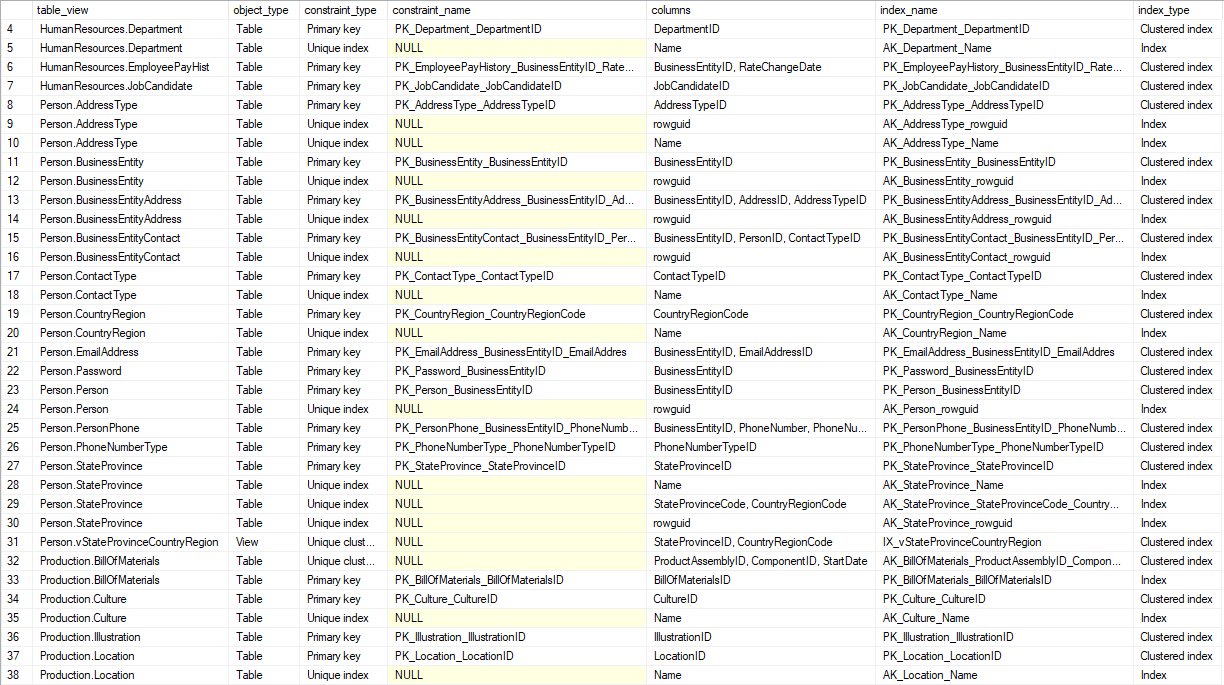Query below returns all primary keys and unique key constraints and unique indexes on tables and views in SQL Server database.
Check out also list of unique keys.
Query
select schema_name(t.schema_id) + '.' + t.[name] as table_view,
case when t.[type] = 'U' then 'Table'
when t.[type] = 'V' then 'View'
end as [object_type],
case when c.[type] = 'PK' then 'Primary key'
when c.[type] = 'UQ' then 'Unique constraint'
when i.[type] = 1 then 'Unique clustered index'
when i.type = 2 then 'Unique index'
end as constraint_type,
c.[name] as constraint_name,
substring(column_names, 1, len(column_names)-1) as [columns],
i.[name] as index_name,
case when i.[type] = 1 then 'Clustered index'
when i.type = 2 then 'Index'
end as index_type
from sys.objects t
left outer join sys.indexes i
on t.object_id = i.object_id
left outer join sys.key_constraints c
on i.object_id = c.parent_object_id
and i.index_id = c.unique_index_id
cross apply (select col.[name] + ', '
from sys.index_columns ic
inner join sys.columns col
on ic.object_id = col.object_id
and ic.column_id = col.column_id
where ic.object_id = t.object_id
and ic.index_id = i.index_id
order by col.column_id
for xml path ('') ) D (column_names)
where is_unique = 1
and t.is_ms_shipped <> 1
order by schema_name(t.schema_id) + '.' + t.[name]
Columns
- table_view - schema and name of table or view
- object_type - type of object which constraint/index was created on
- Table
- View
- constraint_type
- Primary key - for primary keys
- Unique constraint - for constraints created with CONSTRAINT UNIQUE statement
- Unique clustered index - unique clustered index without primary/unique constraint
- Unique index - unique non-clustered index without primary/unique constraint
- constraint_name - primary/unique key constraint, null for unique indexes without constraints
- columns - index columns separated with ","
- index_name - name of the index
- index_type - type of the index
- Clustered index - clustered index
- Index - non-clustered index
Rows
- One row represents one constraint/index in the database. Primary/unique key constraints are implemented in SQL Server as indexes and such pair is represented as one row
- Scope of rows: all PKs, UKs and unique indexes
- Ordered by schema and table/view name
Sample results
Primary, unique keys and unique indexes in AdventureWorks database:












 Piotr Kononow
Piotr Kononow